A quantitative model for danger degree evaluation of staged operation of earth dam reservoir in flood season and its application
Chong-xun Mo,Gui-yan Mo,*,Qing Yang,Yu-li Ruan,Qing-ling Jiang,Ju-liang Jin
aCollege of Civil and Architectural Engineering,Guangxi University,Nanning 530004,China
bKey Laboratory of Disaster Prevention and Structural Safety of Ministry of Education,Guangxi University,Nanning 530004,China
cGuangxi Key Laboratory of Disaster Prevention and Engineering Safety,Guangxi University,Nanning 530004,China
dChangjiang Institute of Technology,Wuhan 430212,China
eSchool of Civil Engineering,Hefei University of Technology,Hefei 230009,China
1.Introduction
According to statistics from the National Bureau of Statistics of the People's Republic of China(MWR and NBS,2013),there are currently more than 98000 reservoirs in China,with a total capacity of over 900 billion cubic meters.Of these reservoirs dams,up to 90%are embankment dams.However,due to historical reasons(e.g.,inadequate survey and design,poor construction quality,and improper management),more than 36%of these dams and reservoirs are in dangerous conditions,with various degrees of risk,which not only limit the use of the reservoirs and maximization of economic benefits,but may also cause potentially catastrophic consequences like life loss and property damage if they are wrecked.For these reasons,dam safety and danger condition evaluation are of the utmost importance(Hartford and Baecher,2004;Jiang and Fan,2008).Moreover,according to the International Commission on Large Dams(ICOLD,1973),nearly 50%of earth dam disasters in China and one-third in the world are caused by flood overtopping,seepage,and piping,and other causes make up the rest(Hege,1997;Jin,2008).In principle,an earth dam is considered to be destroyed after suffering flood overtopping,which might lead to unexpected consequences.Therefore,it is important and urgent to improve danger degree analysis and assessment,thus offering a scientific basis and reference for risk management and security decision-making.In the case of modification of dangerous dams,including repairs and reconstruction,economic feasibility and social safety goals need to be addressed.When evaluating the priority of earth dam rehabilitation,it is necessary to estimate the danger degree of these dams and reservoirs and sort them,in order to determine the urgency of reinforcement,which will contribute to reasonable allocation of limited resources.Thus,danger degree evaluation is a potentially useful approach.On the other hand,a flood-water resources utilization strategy with higher standards has been put forward to meet the requirements of rapid industrial and agricultural development.Fortunately,reservoirs are one of the most efficient types of infrastructure for integrated water resources development and management,and flood-limiting water level(FLWL)during the flood season is an important parameter in reservoir operation and the key to coordinating the contradiction between flood risk and reservoir benefit(Eum and Simonovic,2010;Yun and Singh,2008).In addition,an annual fixed FLWL for the whole flood season may reduce electricity generation,because of the lower water level.In this case,water shortage may occur when the flood season is delayed or ends prematurely,which prevents the reservoir from re filling to the normal water level by the end of the flood season.Sub-season flooding and the corresponding FLWL for flood control have been proposed to coordinate flood control and water resources utilization.When the highest water level in front of the dam exceeds the elevation of the dam crest,it will lead to earth dam overtopping and cause earth dam failure.Higher standards for flood water resources utilization seek a more suitable scheduling solution for reservoir optimal operation.The scheduling solution with optimal utilization of water resources,including flood resources that could otherwise lead to disasters in some rainy regions,cannot excess a dam's flood control risk.Therefore,research on the danger degree for flood control risk of earth dam reservoir staged operation is a key step for solidification or reconstruction for dangerous reservoirs,as well as an effective way to flood water resources utilization.
At present,risk-based analysis and management of hydropower projects are developing rapidly,especially in the U.S.,Australia,and Canada.In the 1970s,risk-based analysis conducted by Hagen of U.S.Army Corps of Engineers(USACE),who employed several risk in dices to define dam risk,was used to analyze the failure of the Teton Dam in the U.S.for the first time(Seed and Duncan,1987).Then,guidelines for risk assessment were issued by Australian National Committee on Large Dams in 1994(ANCOLD,1994),mainly with regard to some key steps for risk classification,risk assessment,and risk handling,and then the guidelines were revised in 2003(ANCOLD,2003),Furthermore,Canada BC Hydro conducted risk analysis to assess dam safety,and argued that dam risk analysis should include the recognition of dam accident patterns,the estimation of failure probability,and risk valuation,etc.(Lou,2000).China lags behind other countries in risk management in hydropower projects,but has still generated some relevant research findings(e.g.,Li et al.,1999;Feng et al.,1995;Zhu,2001;Ru and Niu,2001;Ma,2004;Li,2006;Mo et al.,2008).
The aforementioned studies have improved and perfected the operation system for reservoir flood control risk analysis.However,these methods established risk models mostly in the form of frame diagrams,which can only evaluate risk qualitatively according to risk standards;they did not include quantitative calculation and analysis concerning the risk of earth dam overtopping failure.At the same time,it is difficult to obtain unified risk assessment results because of the diversity of risk standards,leading to the disadvantage of risk ranking of dangerous dams and the utilization of reservoir flood water resources(NRC,1983).A natural disaster risk evaluation mode was proposed by the Office of the United Nations Disaster Relief Co-ordinator(UNDRO,1991):R=H×V,whereR,H,andVare the dam overtopping risk degree,danger degree,and vulnerability,respectively,and they all have a value ranging from 0 to 1.However,most researchers have not judged the applicability of this mode or improved the risk model,especially the danger degree model.Therefore,this study focused on setting up a quantitative danger degree evaluation model to evaluate the danger degree of earth dam reservoir staged operation in the flood season.The model was based on the calculation formula of the natural disaster risk evaluation mode.In the model,the uncertainties of flood and wind waves were comprehensively considered in the sub-season flood overtopping risk rate formula,which can transform the dam overtopping risk rate into the danger degree.In addition,the quantitative expression divided the interval of dam overtopping danger on a scale of 0-1 using a four-tier system.Each had its accordant dam overtopping danger attributes,providing a foundation for reservoir danger degree assessment.The proposed model and the solution method were applied to the analysis of the danger degree of an earth dam of the Chengbihe Reservoir,in China.Reasonable FLWLs for reservoir flood season management are proposed below.
2.Solution method of danger degree evaluation model
2.1.Total probability approach
The total probability formula can transform the probability of complex events into the conditional probability of the events in some cases and the probability of occurrence of these events(Tang et al.,2011).It was used to calculate the integrated dam overtopping risk rate for the whole flood season in this study.The definition and expression of the total probability formula can be described as follows:(1)VariablesSandAare the sample space and the possible event in the text eventE,respectively;(2)EventAis divided intonsub-events,such asB1,B2,…,Bn,which are of mutual independence and form the sample spaceS;and, finally,(3)based on the positive values(P(A|Bi)> 0 andP(Bi)>0)of conditional probability(P(A|Bi))of sub-eventBioccurring under the condition that possible eventAalso occurs and the probability(P(Bi))of occurrence of sub-eventBi,the total probability formula can be expressed as(Ding and Deng,1988;Han et al.,2001):

2.2.Monte Carlo simulation
The Monte Carlo simulation(MCS)method is a statistical sampling technique that generates random variables according to the distributional property and provides numerical evaluations of the probabilistic features of performance function response,irrespective of the complex relationships between random factors.The processes for calculating the dam overtopping risk rate for each stage of the flood season by MCS are as follows:(1)sampling a large number of random variablesX1,X2,…,Xn,corresponding to the probability density functionsfX1,fX2,…,fXn;(2)substituting the random variables into the performance functionZ*=g(X1,X2,…,Xn),evaluating the system response of each random variable,and counting the failure timesL(the number with the performance function values being smaller than 0);and(3)obtaining the dam overtopping risk rate(Pf=L/N,whereNis the total number of samples,andPfis the dam overtopping risk rate for a stage of the flood season)(Ma,2004).
2.3.Normalized function
To ensure that the danger degree evaluation index is dimensionless and matches the danger level,it is necessary to undertake standardized processing before dam overtopping danger degree evaluation.The danger degree in the dam overtopping risk model is required to range from 0 to 1.Thus,in this study a normal function was used to transform the dam overtopping risk rate into the danger degree.As is well known,compared to the linear function and cotangent function,the logarithmic function can(1)eliminate the different magnitudes of independent variables;(2)eliminate the heteroscedasticity of different variables;and(3)transform the nonlinear variable relationship into a linear relation,which is more convenient for parameter estimation.Thus,the logarithmic function was used in this study,which can be expressed as

whereaandbare positive parameters,with values based on the dam overtopping risk rate.
3.Quantitative danger degree evaluation model
Earth dam reservoir overtopping disasters are significant natural disasters.Study of the dam overtopping danger degree is a crucial part of disaster risk evaluation.The dam overtopping danger degree corresponds to the failure probability of earth dam reservoirs,which mainly reflects the dam overtopping risk rate.The expression of the natural disaster risk evaluation mode proposed by the Office of the United Nations Disaster Relief Co-ordinator(UNDRO,1991)can be used to evaluate the overtopping risk degree.
3.1.Dam overtopping risk rate model
3.1.1.Dam overtopping risk rate model for each stage of flood season
Dam overtopping can be defined as the situation in which flood outlet works are not able to release water fast enough and the water level rises above the dam crest elevation of the dam.An earth dam can usually bear hydrostatic pressure.If the water level spreads over the dam crest,however,the over flow will erode the dam and decrease the height of the dam,causing more floods to scour the new dam crest,and leading to dam failure.Thus,an earth dam is considered to be destroyed once it suffers flood overtopping that might lead to unexpected consequences.This study mainly concentrated on the failure probability of earth dams when the water level rises above the dam crest elevation.To evaluate the dam overtopping risk associated with dam failure,we needed to develop a method to transform the watersurface levelinto the overtopping probability.Assuming thatDis the dam crest elevation,andZis the upstream water level during a flood event,dam overtopping occurs when the following condition is satisfied(Ma,2004):Z≥D.Zis mainly composed of two parts:the highest flood water levelZmin front of the dam caused by the flood,and the water level incrementZWcaused by wind and waves.As is well known,the effective wind wave should be defined as a wind wave that blows towards the dam body during a flood,and the flood raises the water level to a certain height.ZWincludes the water level increment caused by windeand the increment caused by waveRP.Then,the formulation of the dam overtopping risk rate(Pf)for each stage of the flood season can be represented as follows:

Based on Eq.(3),Pfcan be solved with the Monte Carlo method.
3.1.2.Integrated dam overtopping risk rate model for whole flood season
The dam overtopping risk rate for earth dam staged operation in the flood season cannot reflect the meaning ofyear,which corresponds to the notion of recurrence period.Therefore,it is necessary to turn the dam overtopping risk rate of each stage of the flood season into an integrated dam overtopping risk rate for the whole flood season,based on the reservoir flood season staged operation and the total probability formula.
The annual maximum flood was usually sampled from the whole flood series,and its distribution conforms to the whole flood series to some extent in southwestern China.Based on this condition,and for the purpose of obtaining a unique dam overtopping probability,we assumed that the probability of flood occurrence(P(Bi))in theith stage can be expressed by the probability of the annual maximum flood occurrence in theith stage.According to the definition and calculation of the total probability formula, flooding in the flood season is regarded as a text eventE,the whole flood series constitutes sample spaceS, flood overtopping is regarded as a possible eventA,and the flood season is divided intonstages(B1,B2,…,Bn).P(Bi)andP(A|Bi)express the probability of flood occurrence and the flood overtopping risk rate in theith stage,respectively.Thus,the integrated dam overtopping risk rateP(A)for the whole flood season can be obtained according to Eq.(1).
3.2.Danger degree model
Very few danger degree evaluation models have been developed,especially for earth dam reservoir flood control safety evaluation,because it is in its infancy stage.This paper puts forward a dam overtopping danger degree model based on the dam overtopping probability and a normalized function(Eq.(2)).Dam overtopping risk calculation aims at judging whether the risk is acceptable or not.For this reason,an overtopping risk evaluation standard is necessary,and risk criteria should be determined in light of the risk levels widely adopted by society(Mo et al.,2008).Different countries and regions have established allowable risk criteria adapted to their own situations(Rettemeier et al.,2000).In this study,the damovertopping risk rate was determined by four important characteristic values:the dam overtopping risk rate acceptable to the publicPasp,the dam overtopping risk rate tolerable to the publicPtsp,the check standard of the dam reservoirPcs,and the design standard of dam reservoirPds.Normally,Paspis 10-6,andPtspis 10 timesPasp,that is,10-5.PcsandPdsare flood control standards that ensure the safety of downstream areas and the safety of the dam reservoir in the flood season,and they are usually measured by the design flood level of a certain return period,which is determined by the frequency analysis method,or measured by the practical flood level.In a word,the check standardPcsand design standardPdsof the dam reservoir should be determined according to the actual situation of the reservoir.At the same time,Paspis the lowest limit value of the dam overtopping risk rate,and the upper limit value of the dam overtopping risk rate is set to 10 times greater than that ofPds.Based on the condition,when the dam overtopping risk rate is greater thanPds,the dam is in a highrisk state.Thus,the dam overtopping risk rate ranges fromPaspto 10Pds(Levy,2005).Based on a previous study by Mo(2014),the dam overtopping danger degreeHcan be expressed as follows:

wherecis a coefficient determined by project circumstances.
4.Grading criteria of danger degree
Based on the four important characteristic values of the dam overtopping risk rate,danger degree criteria were divided into four levels in this study:low danger means that the dam overtopping risk rate is slight,with a value betweenPaspandPtsp,and the public can tolerate it;moderate danger means that the dam overtopping risk rate is slightly larger,with a value betweenPtspandPcs,and the failure probability is close to the check standard;high danger means that the dam overtopping risk rate is betweenPcsandPds,the failure probability is greater than the check standard and close to the design standard,and the situation is serious;and extremely high danger means that the dam overtopping risk rate is greater thanPds(Zhu et al.,2003;Tung,1990)and the situation is extremely dangerous.Generally speaking,the dam overtopping risk rate of earth dam reservoirs should be less than the check standard,which means that the danger degree(H)should be no greater than the value corresponding to the moderate danger level.The guidelines of the dam overtopping danger degree are as follows: flood control is dominant and govemance is secondary at the low danger level;equal attention should be paid to flood control and govemance at the moderate danger level;govemance is dominant and flood control is secondary at the high danger level;and both flood control and govemance are abandoned at the extremely high danger.
5.Case study
5.1.Study reservoir
The Chengbihe River in China was selected as the study site for dam overtopping danger degree evaluation of earth dam reservoir staged operation in the flood season.The river,originating from Lingyun County in GuangxiZhuang Autonomous Region,has a main stream with a total length of 127 km and a natural drainage area of 2087 km2.
The Chengbihe Reservoir Dam,located between the longitudes 106°21′E to 106°48′E and the latitudes 23°50′N to 24°45′N(Fig.1),is the largest earth dam in Guangxi Province,equipped with a total capacity of 11.5×108m3.It is a carryover storage multi-function reservoir,not only for the main function of hydropower generation,but also for water supply,flood control,irrigation, fisheries,and tourism(ABCR,1998).The return period of the reservoir design flood is 1000 years,and the return period of the check flood is 10000 years.The top elevation of the dam is 190.60 m above mean sea level,with a dead storage elevation of 167.00 m and an active storage elevation of 185.00 m.The normal water level of the Chengbihe Reservoir is 185.00 m,which is identical to the FLWL for the whole flood season,although the research results of flood season-staged regulation for the Chengbihe Reservoir by Mo(2014)are slightly different.The FLWL in the early flood season(April to May)and main flood season(June to August)is 185.00 m,while the FLWL in the late flood season(September to October)is 185.00-188.50 m.
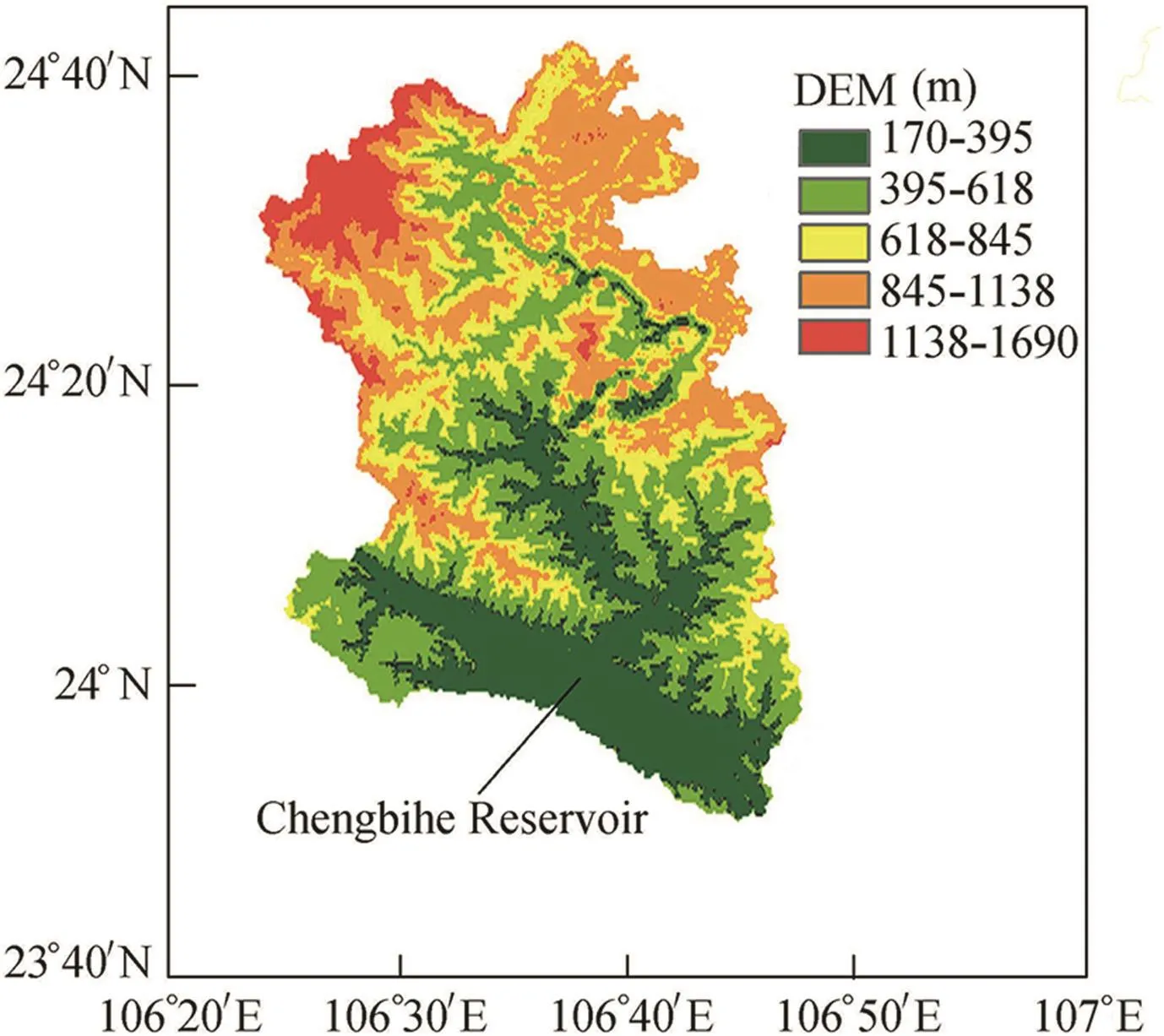
Fig.1.Location of Chengbihe reservoir.
5.2.Dam overtopping risk rate computation
5.2.1.Dam overtopping risk rate computation in each stage of flood season
The annual maximum flood flow series in each stage of the flood season was obtained through sampling the maximum flood flow series in flood seasons of the Chengbihe Reservoir from 1963 to 2011 with the inter-temporal maximum sampling method.Then the probability density function and distribution of peak flood flow in each stage of the flood season were determined,which were used to simulate the reservoir in flow flood based on the Monte Carlo method.Meanwhile,according to the flood characteristics in each stage of the flood season,the Monte Carlo method and computer programming were used to simulate the dam overtopping risk rate in each stage of the flood season.The results are shown in Table 1.
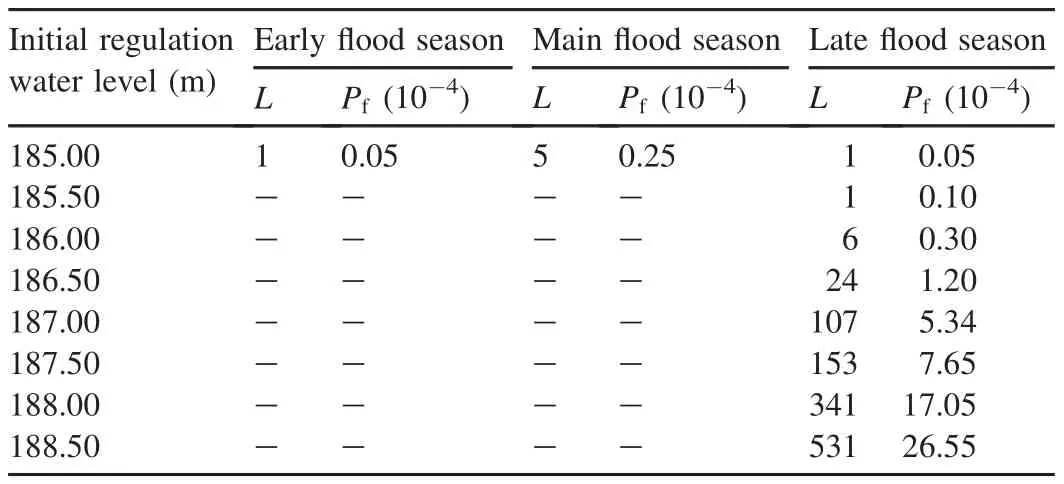
Table 1Dam overtopping risk rate in each stage of flood season calculated with Monte Carlo method.
5.2.2.Dam overtopping risk rate computation for whole flood season
According to flood flow series data in flood seasons from 1963 to 2011 and previous research results from Ma(2004),the frequency of flood occurrence in each stage during the flood season was 4.08%in the early flood season(April to May),85.72%in the main flood season(June to August),and 10.20%in the late flood season(September to October).Thus,the integrated dam overtopping risk rate for the whole flood season of the Chengbihe Reservoir can be expressed as follows:

whereB1,B2,andB3are the probabilities of dam overtopping in the early,main,and late flood seasons,respectively.
The integrated dam overtopping risk rates for the whole flood season at different FLWLs can be calculated by Eq.(5),in which the dam overtopping risk rate in each stage of the flood season can be obtained by the Monte Carlo method.The results are shown in Table 2.
5.3.Danger degree computatio n
For Eq.(4),cis a coefficient and determined according to four characteristic values of the dam overtopping risk rate(Pasp,Ptsp,Pcs,andPds).Assuming thatcranges from 0.1 to 1.0,a set of corresponding dam danger degree are obtained,within the range of 0.1-1.0.Based on numerical analysis,whencis close to 0.8,the danger degree corresponding to the dam overtopping risk rate is much more in line with the requirements of the grading criteria of the danger degree,where the critical danger degree values of the four danger degree levels are 0,0.33,0.57,and 0.79.Based on dam overtopping risk evaluation standards(Pasp,Ptsp,Pcs,andPdsare 10-6,10-5,10-4,and 10-3,respectively)and Eq.(5),the dam overtopping danger degree is divided into four levels:0 to 0.33 for low danger,0.33 to 0.57 for moderate danger,0.57 to 0.79 for high danger,and 0.79 to 1 for extremely high danger.The danger degree evaluation model of the Chengbihe Reservoir can finally be expressed as
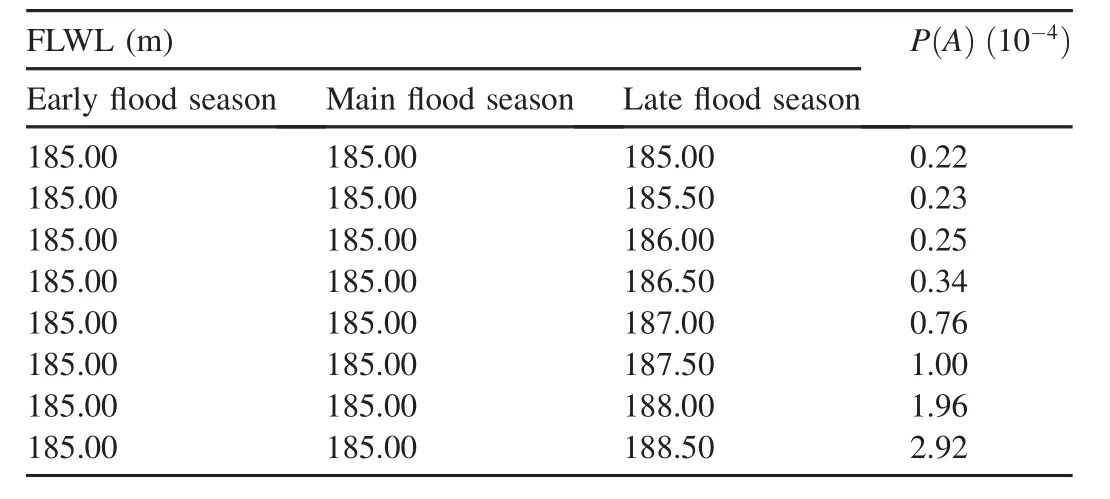
Table 2Integrated dam overtopping risk rates for whole flood season at different FLWLs.

Dam overtopping danger degreeHat different FLWLs can be obtained according to the integrated dam overtopping risk rate for the whole flood season in Table 2 and Eq.(6).The results are shown in Table 3.
5.4.Danger degree evaluation
The values of the dam overtopping danger degree evaluated in this study were computed under the conditions of a specific set of initial sub-season flood water levels.As is well known,the dam overtopping risk rate should be controlled within the reservoir check standard,which means that the dam overtopping danger degree should not exceed the upper limit value of moderate danger levelPcs.Therefore,for the purpose of flood control and irrigation safety,the danger degree of the Chengbihe Reservoir should be less than or equal to 0.57 according to Section 5.3.Meanwhile,Table 3 indicates that,on one hand,the dam overtopping danger degree of the Chengbihe Reservoir for an initial flood water level of 185.00 m(the initial regulation water levels for different subseasons were 185.00 m)was 0.42,which can be judged as moderate danger.On the other hand,the adjustable value of FLWL for the Chengbihe Reservoir was 185.00 m for the early and main flood seasons,and ranged 185.00-187.50 m for the late flood season,which meets the prerequisites for moderate danger.
6.Conclusions
This study demonstrated the procedure of a quantitative danger degree evaluation model and the judgment of FLWLs for each flood season.An earth dam overtopping risk rate model for the calculation of dam overtopping probability in each stage of the flood season and in the whole flood season was established.Then,grade division and evaluation of the dam overtopping danger degree were conducted quantitatively,according to the four important characteristic values of thedam overtopping risk rate.The proposed model was applied to the Chengbihe Reservoir in China.The following conclusions are drawn:
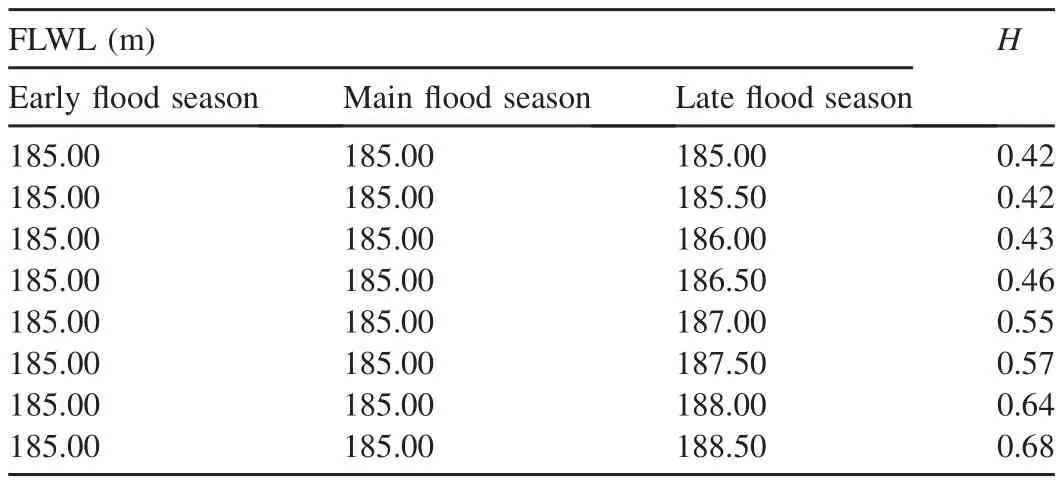
Table 3Dam overtopping danger degree of Chengbihe Reservoir at different FLWLs.
(1)The danger degree of the Chengbihe Reservoir under the design standard was 0.57,corresponding to a moderate danger level.
(2)FLWL for the Chengbihe Reservoir staged operation can be recommended as follows:185.00 m for the early and main flood seasons,and 185.00-187.50 m for the later flood season.
The quantitative model for danger degree evaluation of earth dam reservoir staged operation in the flood season can provide a theoretical basis for danger degree assessment of earth dam reservoirs under normal operating conditions as well as optimal FLWLs for reservoir staged operation during the flood season.
However,there were some limitations in this study:(1)The dam overtopping risk rate for each stage of the flood season was based on the conditional probability,regarding dam overtopping events as independent of one another in each stage of the flood season.In fact,inter-temporal floods were indeed correlated to each sub-season flood(Xiao,2004),and appropriate ways to consider this correlation is still an issue that is worth studying.(2)In the Monte Carlo simulation method,it is important to generate random number flow for the given probability distribution.Generally,the efficiency of simple random sampling is low,and an efficient random number generator,which is both fast and highly accurate,should be used.
References
Administrative Bureau of the Chengbihe Reservoir(ABCR),1998.Introduction for the Chengbihe Reservoir.ABCR,Baise(in Chinese).
Australian National Committee on Large Dams(ANCOLD),1994.Guidelines on Risk Assessment.ANCOLD,Sydney.
Australian National Committee on Large Dams(ANCOLD),2003.Guidelines on Risk Assessment.ANCOLD,Sydney.
Ding,J.,Deng,Y.R.,1988.Statistical Hydrology.Dengdu University of Science and Technology Press,Chengdu(in Chinese).
Eum,H.I.,Simonovic,S.P.,2010.Integrated reservoir management system for adaptation to climate change:The Nakdong River Basin in Korea.Water Resour.Manag.24(13),3397-3417.https://doi.org/10.1007/s11269-010-9612-1.
Feng,P.,Chen,G.F.,Lu,Y.L.,Ji,E.F.,1995.Risk analysis for impoundment level of Gangnan Reservoir.J.Tianjin Univ.28(4),572-576(in Chinese).
Han,K.Y.,Kim,S.H.,Bae,D.H.,2001.Stochastic water quality analysis using reliability method.J.Am.Water Resour.Assoc.37(3),695-708.https://doi.org/10.1111/j.1752-1688.2001.tb05504.x.
Hartford,D.N.D.,Baecher,G.B.,2004.Risk and Uncertainty in Dam Safety.Thomas Telford Publishing,London.
Hege,K.,1997.Dam safety evaluation and risk analysis.Exp.Water Resour.Hydropower Inf.18(9),1-6.
International Commission on Large Dams(ICOLD),1973.Lessons from Dam Incidents,Reduced Edition.ICOLD,Paris.
Jiang,S.H.,Fan,Z.W.,2008.Earth-rock fill dam safety classification and risk rate assessment on flood control.J.Hydraul.Eng.39(1),35-40.https://doi.org/10.13243/j.cnki.slxb.2008.01.008(in Chinese).
Jin,Y.,2008.Study on the Analysis Approach for the Dangerous Situation of Dam Breach.M.E.Dissertation.Hohai University,Nanjing(in Chinese).
Levy,J.K.,2005.Multiple criteria decision making and decision support systems for flood risk management.Stoch.Environ.Res.Risk Assess.19(6),438-447.https://doi.org/10.1007/s00477-005-0009-2.
Li,J.C.,Li,L.,Sheng,J.B.,Yang,Z.H.,1999.Research of the reservoir dam safety evaluation.Hydro-Sci.Eng.21(1),77-83(in Chinese).
Li,L.,2006.Dam Risk Evaluation and Risk Management.China Water Conservancy and Hydropower Press,Beijing(in Chinese).
Lou,J.K.,2000.Dam safety risk management of Canada BC Hydro company.Dam Saf.14(4),7-11(in Chinese).
Ma,R.Y.,2004.Risk Analysis Methods and Applications of Earth-rock Dam.Science Press,Beijing(in Chinese).
Ministry of Water Resources of China(MWR),National Bureau of Statistics of China(NBS),2013.Bulletin of First National Census for Water.China Water Power Press,Beijing(in Chinese).
Mo,C.X.,Liu,F.G.,Yu,M.,Ma,R.Y.,Sun,G.K.,2008.Risk analysis for earth dam overtopping.Water Sci.Eng.1(2),76-87.https://doi.org/10.3882/j.issn.1674-2370.2008.02.008.
Mo,C.X.,2014.Reservoir Flood Stage Earth-rock Dam Project Scheduling Key Technology and Application.Science Press,Beijing(in Chinese).
National Research Council(NRC),1983.Safety of Existing Dams:Evaluation and Improvement.The National Academy Press,Washington D.C.
Office of the United Nations Disaster Relief Co-ordinator(UNDRO),1991.Mitigating Natural Disasters:Phenomena,Effects and Options:A Manual for Policy Makers and Planners.United Nations,New York.
Rettemeier,K.,Falkenhagen,B.,K¨ongeter,J.,2000.Risk Assessment-new Trends in Germany.In:Proceedings of the 21th International Congress on Large Dams.Beijing,pp.625-641.
Ru,N.H.,Niu,Y.G.,2001.Dam Accident and Safety of Earth and Rock- fill Dam.China Water Conservancy and Hydropower Press,Beijing(in Chinese).
Seed,H.B.,Duncan,J.M.,1987.The failure of Tet on dam.Eng.Geol.24(1-4),173-205.https://doi.org/10.1016/0013-7952(87)90060-3.
Tang,X.H.,Li,H.A.,Duan,L.X.,2011.Generalizations and applications of the formula of total probability.Study Coll.Math.14(4),51-52(in Chinese).
Tung,Y.K.,1990.Evaluating the probability of violating dissolved oxygen standard.Ecol.Model.51(3-4),193-204.https://doi.org/10.1016/0304-3800(90)90064-n.
Xiao,Y.,2004.Criteria and Risk Analysis for Dam Hydrological Safety.M.E.Dissertation.Wuhan University,Wuhan(in Chinese).
Yun,R.,Singh,V.P.,2008.Multiple duration limited water level and dynamic limited water level for flood control,with implications on water supply.J.Hydrol.354(1-4),160-170.https://doi.org/10.1016/j.jhydrol.2008.03.003.
Zhu,H.L.,Chen,Z.H.,Zhou,Z.H.,2003.Risk analysis on dam overtopping of Tai-he Reservoir.Dam Saf.17(4),11-14(in Chinese).
Zhu,Y.S.,2001.Flood defense based on risk analysis.J.Hohai Univ.(Nat.Sci.)29(4),15-20(in Chinese).
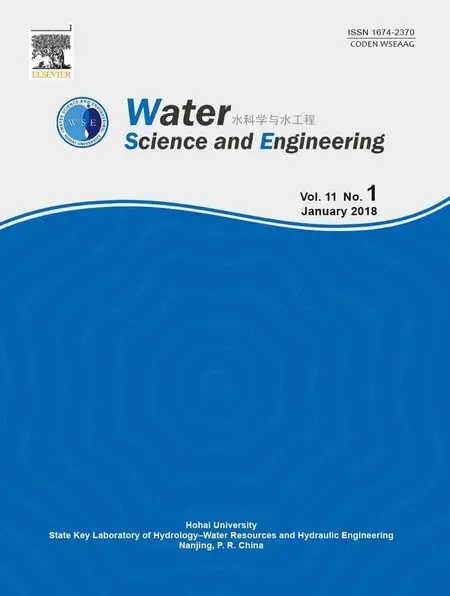 Water Science and Engineering2018年1期
Water Science and Engineering2018年1期
- Water Science and Engineering的其它文章
- Experimental and numerical analysis of flow over a rectangular full-width sharp-crested weir
- Study of total variation diminishing(TVD)slope limiters in dam-break flow simulation
- Cloud-Verhulst hybrid prediction model for dam deformation under uncertain conditions
- Effect of trapezoidal collars as a scour countermeasure around wing-wall abutments
- A simplified physically-based breach model for a high concrete-faced rock fill dam:A case study
- Effects of elevated atmospheric CO2and nitrogen fertilization on nitrogen cycling in experimental riparian wetlands
